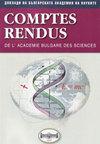第23太阳活动周期内受限细丝/日珥喷发的统计研究
IF 0.3
4区 综合性期刊
Q4 MULTIDISCIPLINARY SCIENCES
Comptes Rendus De L Academie Bulgare Des Sciences
Pub Date : 2023-10-01
DOI:10.7546/crabs.2023.09.09
引用次数: 0
摘要
细丝/日珥喷发会对地球上层大气和太空环境产生重大影响,是现在所谓的太空天气的主要驱动因素。为了区分不同类型的长丝喷发,我们在第23个太阳周期对它们进行了统计研究。在这项研究中,我们利用第23太阳周期(1996年5月- 2008年1月)观测到的行星际(IP)冲击列表及其源信息环境卫星(GOES) x射线图(见Gopalswamy et al. [Gopalswamy N., H. Xie, P. Mäkelä, S. Akiyama, S. Yashiro et al.(2010),缺乏II型射电暴的行星际冲击,astro物理学),使用了159个灯丝喷发。[J] .生物医学工程学报,2004,11(2):444 - 444。研究发现,69%的长丝喷发为密闭喷发,31%为喷射喷发。密闭喷发分别为110次和34次(21%)。它们是由活跃的细丝引起的,76次(48%)是由消失的细丝引起的。在第23太阳周期的增增期,活动细丝和消失细丝的出现率为80%,而在减少期,活动细丝的出现率为13%。我们发现局限喷发的x射线耀斑能量主要为C级。最常见的丝场范围位于5至15度之间。最常见的耀斑持续时间在16到40分钟之间。本文章由计算机程序翻译,如有差异,请以英文原文为准。
Statistical Study of Confined Filament/Prominence Eruptions during Solar Cycle 23
Filament/prominence eruptions can have a significant impact on Earth's upper atmosphere and space environment, and are the primary drivers of what is now called space weather. To distinguish the different types of filament eruptions we statistically examine them during the 23rd Solar cycle. In this study we use 159 filament eruptions using the List of interplanetary (IP) Shocks Observed during Solar Cycle 23 (May 1996 – January 2008) and their Source Information Environmental Satellites (GOES) X-ray plots (see Gopalswamy et al. [Gopalswamy N., H. Xie, P. Mäkelä, S. Akiyama, S. Yashiro et al. (2010) Interplanetary shocks lacking type II radio bursts, Astrophys. J., 710, 1111–1126]). It is found that 69% of the filament eruptions are confined eruptions, while 31% are ejective eruptions. Confined eruptions are 110 and 34 events (21%). They are due to active filaments and 76 events (48%) are due to disappearing filaments. The occurrences of active and disappearing filaments during the increasing phase of solar cycle 23 is found to be 80% while in the decreasing phase they are 13%. We have found that the dominant X-ray flare energy of confined eruptions is that of C class. The most common filaments field extent is located between 5 and 15 degrees. The most common flare duration is between 16 and 40 minutes.
求助全文
通过发布文献求助,成功后即可免费获取论文全文。
去求助
来源期刊
CiteScore
0.60
自引率
33.30%
发文量
181
审稿时长
3-6 weeks
期刊介绍:
Founded in 1948 by academician Georgy Nadjakov, "Comptes rendus de l’Académie bulgare des Sciences" is also known as "Доклади на БАН","Доклады Болгарской академии наук" and "Proceeding of the Bulgarian Academy of Sciences".
If applicable, the name of the journal should be abbreviated as follows: C. R. Acad. Bulg. Sci. (according to ISO)

 求助内容:
求助内容: 应助结果提醒方式:
应助结果提醒方式:


